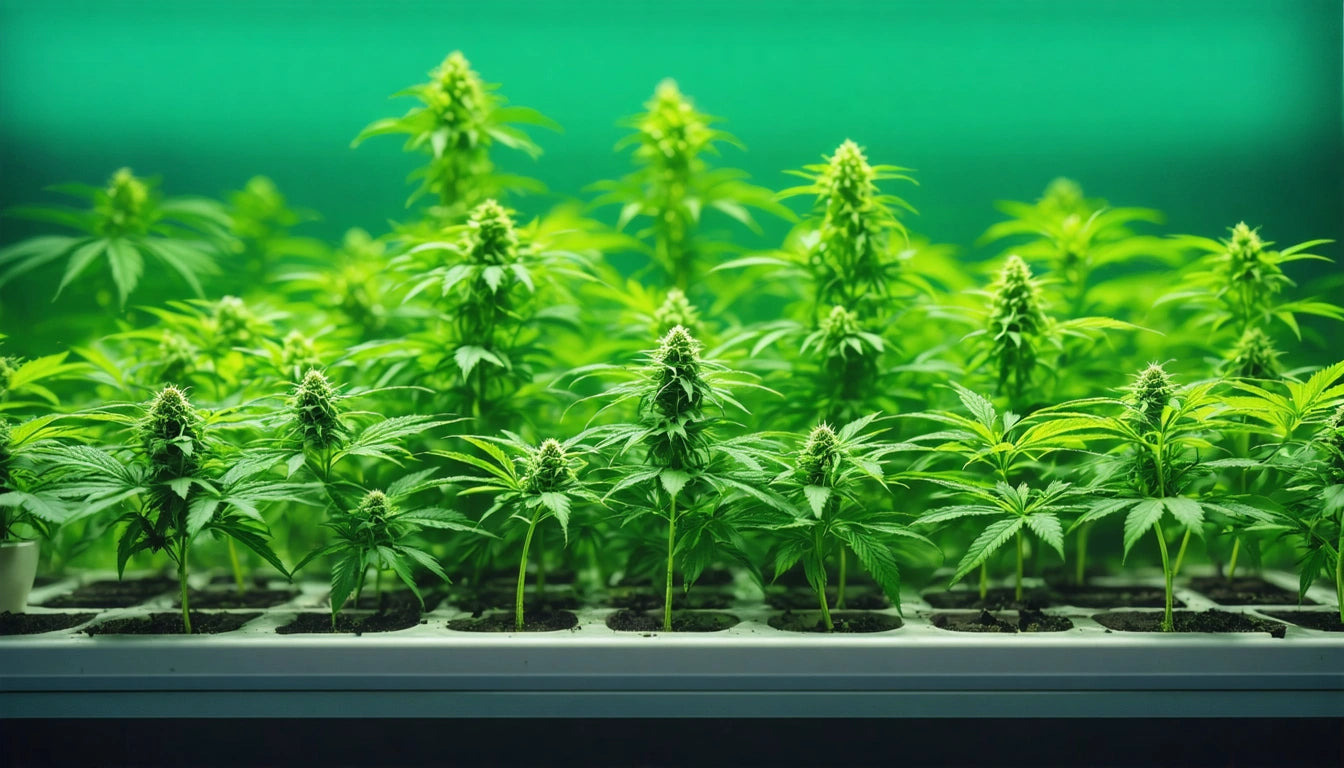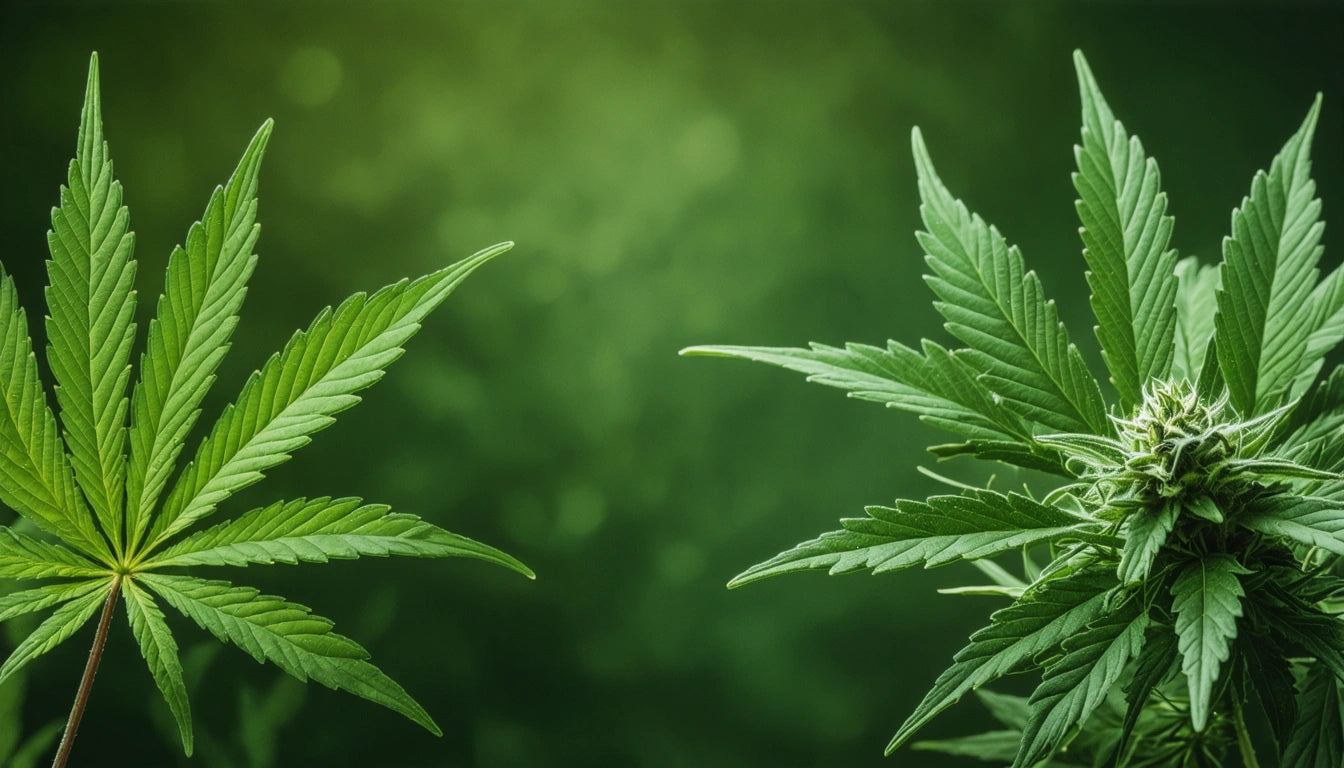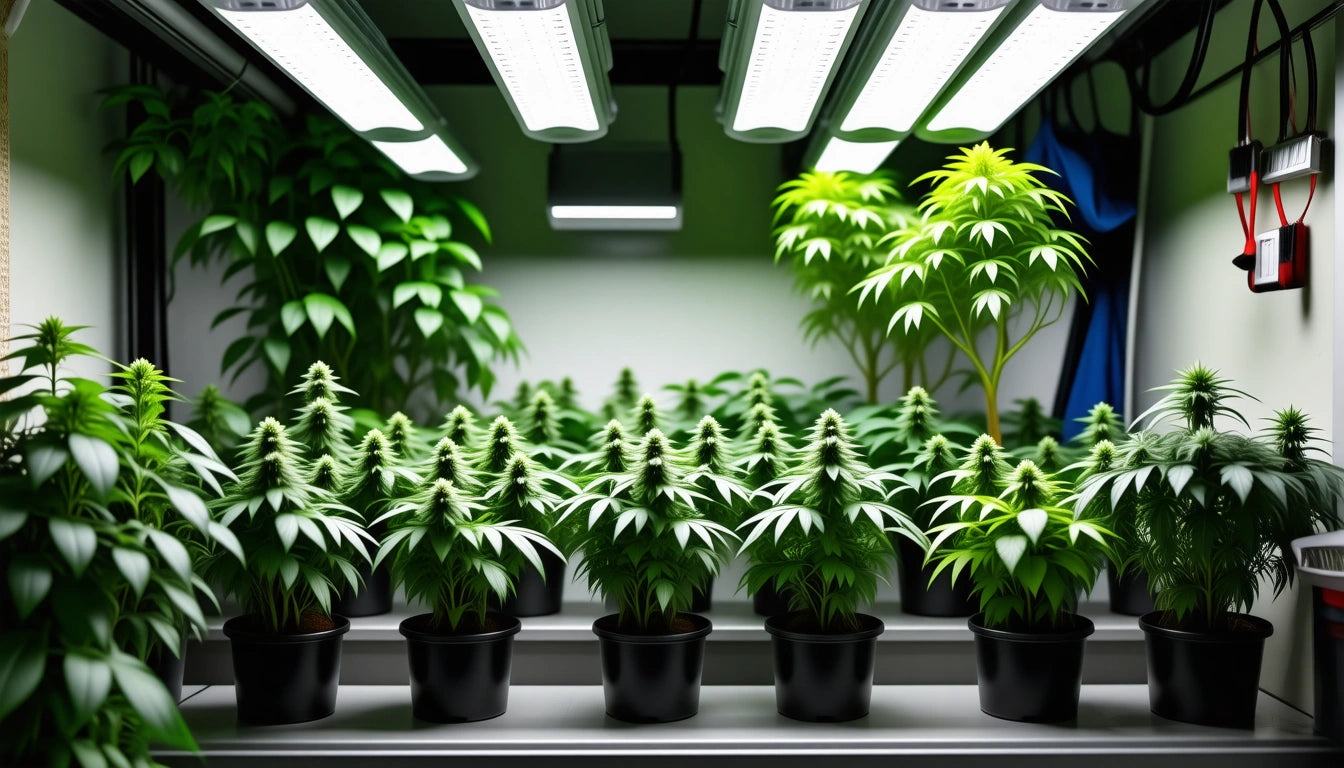- Understanding PPFD for Cannabis Cultivation
- Best PPFD for Seedlings: Gentle Light for Delicate Beginnings
- Optimal PPFD for Vegetative Growth: Building Strong Foundations
- How Much PPFD for Flowering: Maximizing Bud Development
- Adjusting PPFD Levels in Different Growing Environments
- Optimizing Your Lighting Strategy for Maximum Yields
Optimal PPFD Levels for Seedlings, Vegetative Growth, and Flowering Stages
Photosynthetic Photon Flux Density (PPFD) is a critical measurement for cannabis cultivators seeking to optimize plant growth across different development stages. Understanding the ideal PPFD levels for seedlings, vegetative growth, and flowering can significantly impact your yields, potency, and overall plant health.
Understanding PPFD for Cannabis Cultivation
PPFD measures the number of photosynthetically active photons that fall on a given surface area per second. It's expressed in micromoles per square meter per second (μmol/m ²/s) and represents the actual light intensity your plants receive. Unlike wattage or lumen measurements, PPFD directly correlates with photosynthetic potential.
For cannabis growers, dialing in the correct PPFD levels is as important as maintaining proper VPD levels throughout growth stages. Both factors work together to create the ideal growing environment.
Best PPFD for Seedlings: Gentle Light for Delicate Beginnings
Seedlings and clones require significantly lower light intensity than mature plants. During this delicate stage, their photosynthetic machinery is still developing.
Recommended PPFD Range for Seedlings
- Early seedlings (first 1-7 days): 100-200 μmol/m ²/s
- Established seedlings (7-14 days): 200-300 μmol/m ²/s
Exceeding these levels can stress young plants, causing stunted growth or light burn. As noted in resources about optimal light requirements for seedling growth, gentle light promotes strong root development and prevents stretching.
When starting from quality cannabis seeds, proper light levels ensure successful germination and establishment. For autoflowering varieties, which have shorter life cycles, appropriate seedling lighting is even more crucial, as discussed in guides about top autoflower seeds for optimal yields.
Optimal PPFD for Vegetative Growth: Building Strong Foundations
During the vegetative stage, plants focus on developing strong stems, branches, and leaves. Light intensity should increase progressively as plants mature.
Recommended PPFD Range for Vegetative Growth
- Early vegetative (2-3 weeks): 300-400 μmol/m ²/s
- Mid vegetative (3-4 weeks): 400-600 μmol/m ²/s
- Late vegetative (4+ weeks): 600-800 μmol/m ²/s
The best PPFD for veg depends on several factors, including strain genetics, growing environment, and supplemental CO2 levels. Plants with adequate CO2 enrichment can utilize higher PPFD levels more efficiently.
Proper light levels during vegetation set the stage for successful flowering. As cultivators prepare for transitioning from vegetative to flowering stage, gradual light intensity adjustments help minimize stress.
How Much PPFD for Flowering: Maximizing Bud Development
The flowering stage demands the highest light intensity of the entire growth cycle. During this critical phase, plants convert light energy into the essential compounds that determine yield and potency.
Recommended PPFD Range for Flowering
- Early flowering (weeks 1-3): 800-900 μmol/m ²/s
- Peak flowering (weeks 3-6): 900-1100 μmol/m ²/s
- Late flowering (final weeks): 800-1000 μmol/m ²/s
When determining how much PPFD for flowering is optimal, consider your environmental controls. In grow rooms with CO2 supplementation (800-1200 ppm), plants can effectively utilize PPFD levels up to 1500 μmol/m ²/s. Without added CO2, staying below 1000 μmol/m ²/s is generally recommended to prevent light stress.
Alongside proper lighting, many growers incorporate bloom boosters and flowering-specific nutrients to maximize bud development.
Adjusting PPFD Levels in Different Growing Environments
Environmental factors significantly impact how plants respond to light intensity. Proper containment systems are essential for maintaining optimal growing conditions. Many commercial growers rely on specialized containers with secure caps to preserve harvested product quality after achieving ideal growth conditions.
PPFD Considerations for Different Setups
- Indoor Grow Tents: Smaller spaces may require adjustable lighting to prevent heat buildup while maintaining proper PPFD.
- Commercial Grow Rooms: Larger operations benefit from uniform PPFD distribution across the canopy.
- Greenhouse Cultivation: Supplemental lighting should account for natural sunlight contribution to total PPFD.
Temperature and humidity directly affect how much light plants can effectively process. Higher temperatures (up to a point) allow plants to utilize more light, while excessive heat reduces photosynthetic efficiency regardless of PPFD levels.
Optimizing Your Lighting Strategy for Maximum Yields
Finding the perfect PPFD levels for each growth stage requires monitoring, testing, and adjustment. Modern LED grow lights offer precision control over spectrum and intensity, allowing cultivators to tailor light recipes to specific cultivars and growth phases.
When implementing your lighting strategy, consider these practical tips:
- Measure PPFD at multiple points across your canopy to ensure uniform coverage
- Gradually increase intensity when transitioning between growth stages
- Adjust height and/or dimming controls as plants grow closer to light sources
- Monitor plant response and be prepared to reduce intensity if stress symptoms appear
- Track environmental data alongside PPFD readings to identify optimal conditions
By dialing in the best PPFD for seedlings, vegetative growth, and flowering stages, cultivators can maximize photosynthetic efficiency while minimizing energy costs. Remember that these recommendations serve as starting points, and the specific needs of different genetics may vary. The goal is to provide enough light for optimal growth without pushing plants beyond their photosynthetic capacity.











Leave a comment
All comments are moderated before being published.
This site is protected by hCaptcha and the hCaptcha Privacy Policy and Terms of Service apply.